43 daily value on food labels
How To Calculate Percent Daily Value for Food Portions - Outstanding Foods It's time to do some math! The Percent Daily Value is calculated by dividing the amount in a serving by the total recommended daily amount. Multiply that answer by 100, and you've got your %DV! For example: 3g in a serving 15g recommended per day 3/15 = 0.2 0.2 x 100 = 20% Daily Values (DVs) - National Institutes of Health DVs were developed by the U.S. Food and Drug Administration (FDA) to help consumers determine the level of various nutrients in a standard serving of food in relation to their approximate requirement for it. The label actually provides the %DV so that you can see how much (what percentage) a serving of the product contributes to reaching the DV.
The Complete Guide to Recommended Daily Intakes, Daily Values, and ... The Daily Value (DV) builds on the RDI, but creates a number meant for everyone that can be put on the labels of food products. In short, the RDI is more specific and the DV is more general. If you are confused, don't worry, this article will clarify it for you, and give you a table with all the numbers.
Daily value on food labels
What Does "% Daily Value" Mean on a Food or Supplement Label? The U.S. Food and Drug Administration (FDA) recommends 400 IU, so that's what the Daily Value is set at. The Institute of Medicine recommends getting between 600 and 800 IU per day (as does Health Canada ). Dr. Oz recommends 1,000 IU. Dr. Andrew Weil recommends 2,000 IU. The Linus Pauling Institute recommends 2,000 IU. How to Calculate % of Daily Value on Food Labels | livestrong Step 1 Find the nutrient amount on the food label. Step 2 Look up the total daily recommended amount in the USDA Dietary Guidelines. Step 3 Divide the nutrient amount by the total daily recommended value. Step 4 Multiply by 100. Things You'll Need United States Department of Agriculture (USDA) Dietary Guidelines Food label Calculator Tip Percent daily value - Canada.ca dividing the amount of a nutrient in a serving size by its daily value, then multiplying that number by 100 For example, a food product has 3 mg of iron. The daily value for iron is 14 mg. This means that the % DV for iron would be 21%. If you would like to do your own calculation, use the equation below to help you. (3 mg ÷ 14 mg) × 100 = 21% DV
Daily value on food labels. Food Labels | CDC - Centers for Disease Control and Prevention In general, eat more foods that are higher in vitamins, minerals (such as calcium and iron), and fiber. Eat fewer foods that are higher in added sugars, saturated fat, and sodium (salt), and avoid trans fat. Keep in mind that the % Daily Value of each nutrient, such as total fat of 10% in the example below, is based on eating 2,000 calories a day. Daily Value and Percent Daily Value: Changes on the New Nutrition and ... Daily value and percent daily value and the new nutrition facts label Keywords: nutrition facts label Created Date: 4/3/2020 3:03:45 PM ... eCFR :: 21 CFR Part 101 -- Food Labeling In addition to providing a column within the Nutrition Facts label that lists the quantitative amounts and percent Daily Values per serving, for a product that is packaged and sold individually that contains more than 150 percent and less than 200 percent of the applicable reference amount, the Nutrition Facts label may voluntarily provide, to ... Daily Value: Definition and How to Calculate It - Insider Found on the nutrition label, the daily value system tells you can help you determine if a product is high or low in particular nutrients. What does daily value mean? Daily value (DV) refers to how much of a nutrient you should consume each day based on a 2,000 calorie diet. You can find daily values for a range of nutrients on the FDA's website.
Nutrition Labelling - Table of Daily Values - Canada.ca Nutrition Labelling - Table of Daily Values Alternate Format PDF Version - 116 K On this page Part 1 - Daily values for macronutrients and sodium Part 2 - Daily values for vitamin and mineral nutrients Part 1 - Daily values for macronutrients and sodium g = grams; mg = milligrams Part 2 - Daily values for vitamin and mineral nutrients How To Read Food and Beverage Labels - National Institute on Aging At the top of the Nutrition Facts label, you will find the total number of servings in the container and the food or beverage's serving size. The serving size on the label is based on the amount of food that people may typically eat at one time and is not a recommendation of how much to eat. Read more about serving and portion sizes. The Basics of the Nutrition Facts Label - Academy of Nutrition and ... Step 4: Check Out the Nutrition Terms. Low calorie: 40 calories or less per serving. Low cholesterol: 20 milligrams or less and 2 grams or less of saturated fat per serving. Reduced: At least 25% less of the specified nutrient or calories than the usual product. Good source of: Provides at least 10 to 19% of the Daily Value of a particular ... Nutrition Facts Food Label (Reading Labels, Consumer Math, Daily Value ... This Nutrition Facts Labels Unit teaches students how to read Food Nutrition Facts Labels. It discusses important key terms like Calories, Daily Value, Ingredients, and Allergens. It asks students questions that requires them to think critically and apply math skills while reading a Nutrition Facts Label. There is an example page that shows them how to solve the problems that require them to ...
Your Guide to the New Food Label | National Kidney Foundation The Nutrition Facts Label helps you understand the nutrients a food product contains, and the Nutrition Facts Table lists all the items required by the law. Food labels have percent daily values listed for a set group of nutrients based on the Food and Drug Administration (FDA) recommended 2000 calorie diet. What's New with the Nutrition Facts Label | FDA Daily Values for nutrients have been updated, which may make the percent Daily Value higher or lower on the new Nutrition Facts label. As a general guide: 5% DV or less of a nutrient per serving ... How to Understand and Use the Nutrition Facts Label | FDA The % Daily Value (%DV) is the percentage of the Daily Value for each nutrient in a serving of the food. The Daily Values are reference amounts (expressed in grams, milligrams, or micrograms) of... Added Sugars on the New Nutrition Facts Label | FDA The Dietary Guidelines for Americans recommends limiting calories from added sugars to less than 10 percent of total calories per day. For example, if you consume a 2,000 calorie daily diet, that ...
Daily Value on the New Nutrition and Supplement Facts Labels (3) The Daily Value decrease for vitamin E applies for foods/supplements containing the natural form of vitamin E, but not for the synthetic form. For foods/supplements containing only the...

UNDERSTANDING FOOD LABELS - MAKE THE BEST FOOD DECISIONS | Reading food labels, Nutrition, Food ...
Table of Daily Values - Canada.ca This document is a two-part table that sets out the recommended amounts of nutrients (the daily value) for specific age groups. These are the reference points upon which the % daily value in the nutrition facts table are based. Part 1 of the table sets out the daily values for macronutrients and sodium for two age groups.
Percent daily value - Canada.ca dividing the amount of a nutrient in a serving size by its daily value, then multiplying that number by 100 For example, a food product has 3 mg of iron. The daily value for iron is 14 mg. This means that the % DV for iron would be 21%. If you would like to do your own calculation, use the equation below to help you. (3 mg ÷ 14 mg) × 100 = 21% DV
How to Calculate % of Daily Value on Food Labels | livestrong Step 1 Find the nutrient amount on the food label. Step 2 Look up the total daily recommended amount in the USDA Dietary Guidelines. Step 3 Divide the nutrient amount by the total daily recommended value. Step 4 Multiply by 100. Things You'll Need United States Department of Agriculture (USDA) Dietary Guidelines Food label Calculator Tip
What Does "% Daily Value" Mean on a Food or Supplement Label? The U.S. Food and Drug Administration (FDA) recommends 400 IU, so that's what the Daily Value is set at. The Institute of Medicine recommends getting between 600 and 800 IU per day (as does Health Canada ). Dr. Oz recommends 1,000 IU. Dr. Andrew Weil recommends 2,000 IU. The Linus Pauling Institute recommends 2,000 IU.
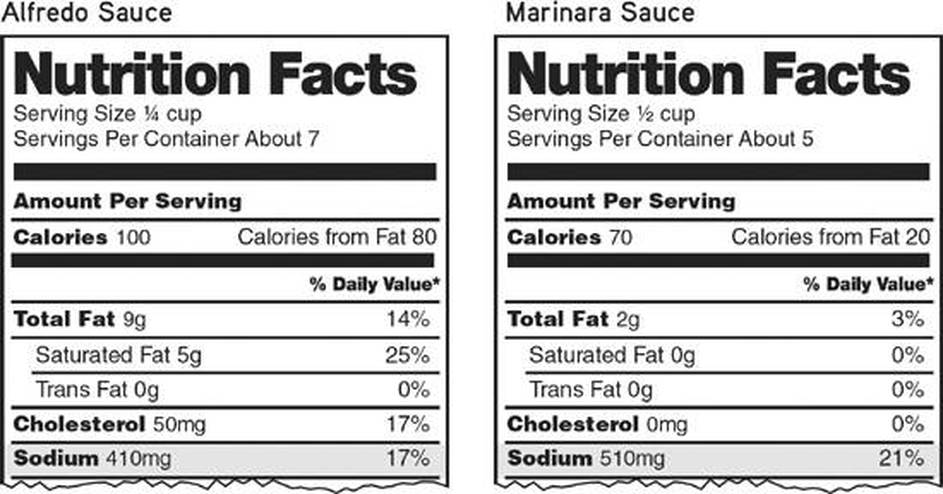
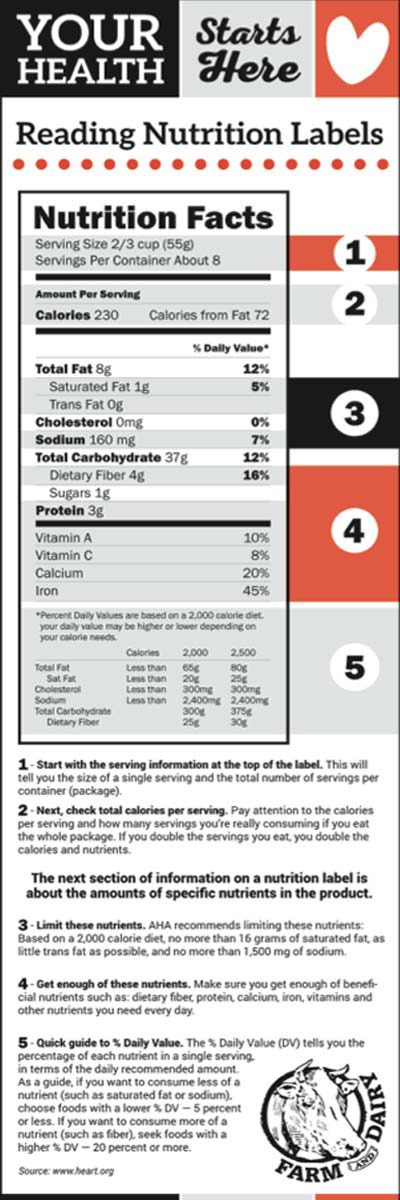
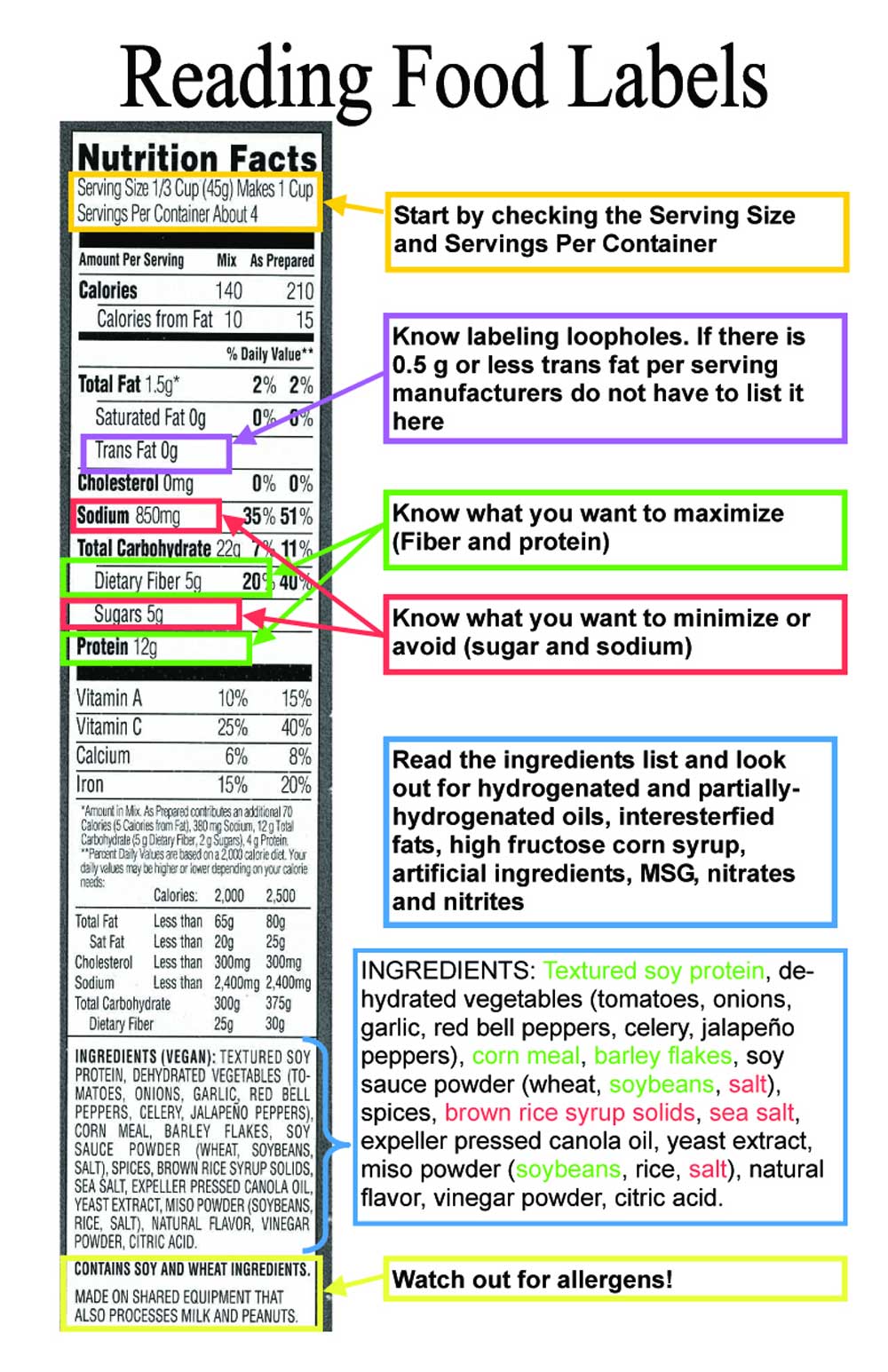
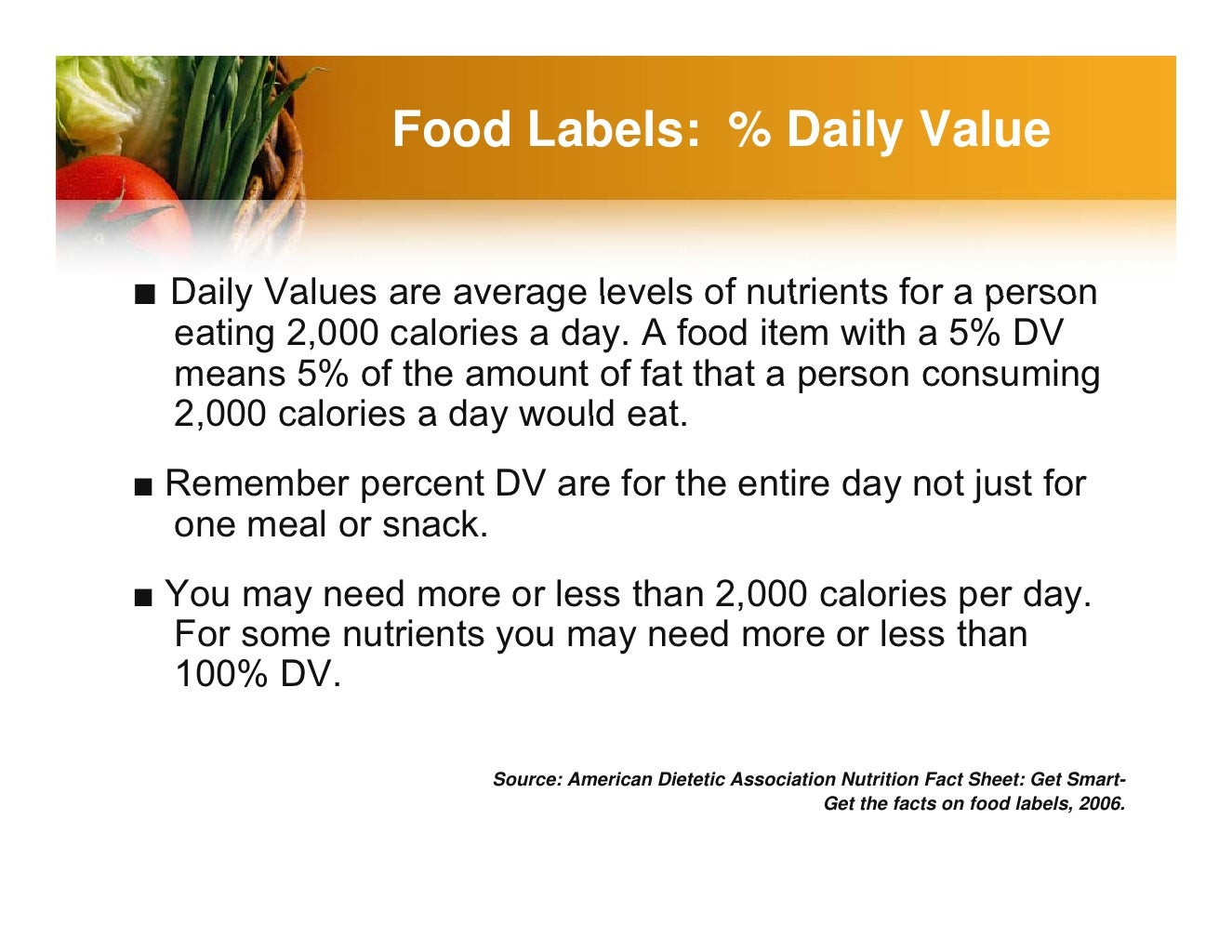

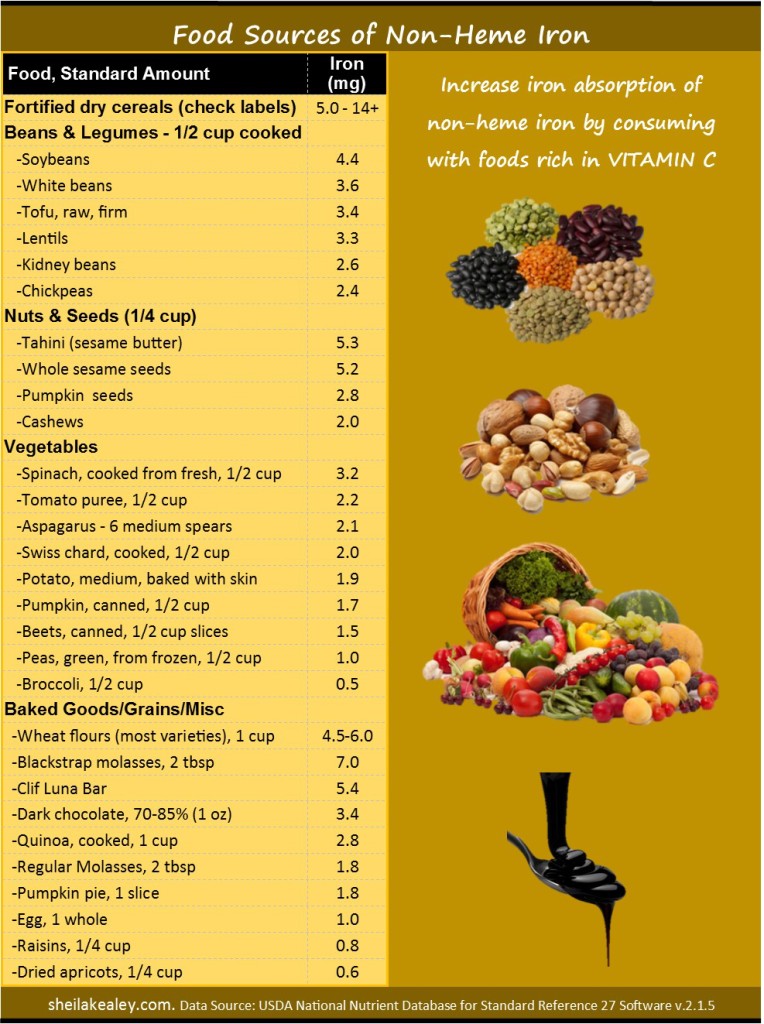
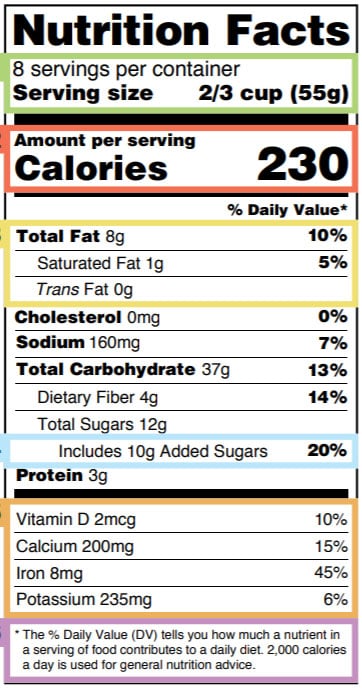
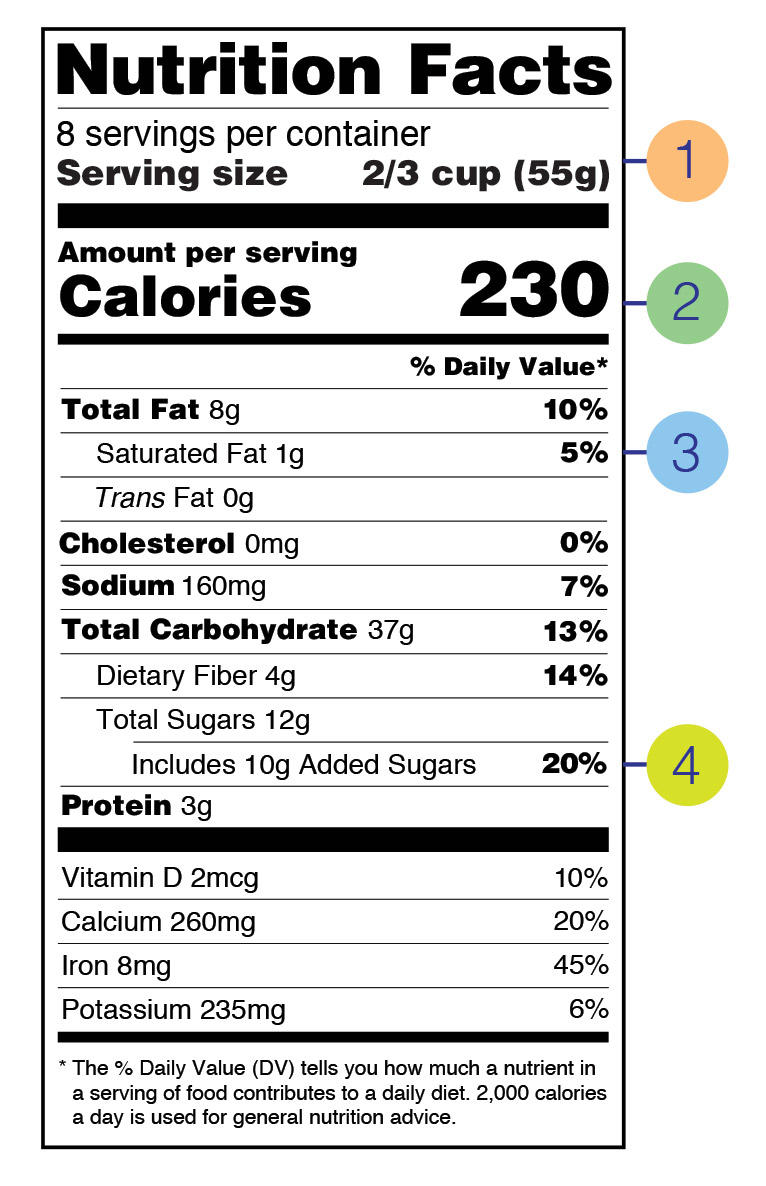





Post a Comment for "43 daily value on food labels"